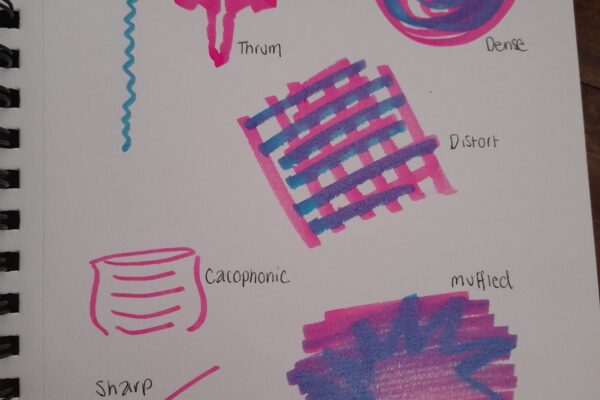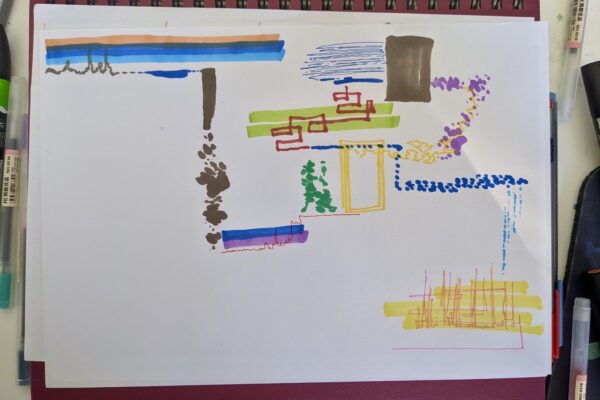Age
7+
Duration
60mins
Difficulty Level
- Beginner
What You’ll Need
- Pens / pencils / paint
- Paper
Create your own notation using shapes, colours and textures.
Traditional scores are filled with rules, so let’s break them!
Western classical notation is good for telling performers of traditional instruments when to play specific notes at specific times. But what if you’re using a non-traditional instrument like a contact microphone, an evolving synthesiser patch or our very own Photon Smasher (which turns light into sound)? In this activity you’ll create your own unique musical notation to express the music and sounds unique to you.
Getting Started.
Step 1.
Automatic Drawing
Without thinking, pondering or planning – quickly draw a shape/image to describe the following sound related words.
- Hush, Boom, Rhythmic, Grinding, Clang, Mellow, Roaring, Buzz, Whisper, Melodic, Squeak, Riotous, Pulsating and Howling.
Step 2.
Soundscape Drawing
Take yourself outside and create a drawing inspired by what you hear. Listen to the rhythms, the soft and hard sounds, the short sounds, the loud sounds, the constant drones, the close sounds, the furtherest away sounds. Represent one or more of these sounds in your drawing.
Here are some examples.
Step 3.
Designing Your Notation
Pick up an acoustic instrument, or a random object, and explore it by scratching, rubbing, stroking or plucking it to find three distinct sounds.
Once you’ve found your three sounds, on your paper design a shape that represents that sound. Now you can compose a piece of music by placing those shapes in a certain order!

Step 4.
Modifiers
Now we can arrange specific sounds in a certain order, but what about telling our performers *how* to perform those sounds; the speed, force, emotion or even what direction they should be facing – its entirely up to you.
By adding modifiers it allows you to customise your notation to convey whatever you like. For example, changing the colour of a shape could change its volume, or adding an arrow could tell the performer what way to face whilst doing it.

Check out more activity guides
Listening games, sound experiments and music making guides










